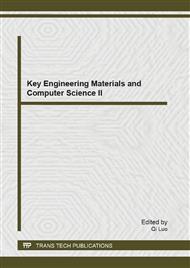[1]
F. Hao, C. W. Chan. Private Key Generation from On-line Handwritten Signatures. Information Man- agement & Computer Security, Issue 10, No. 2, pages 159-164, (2002)
DOI: 10.1108/09685220210436949
Google Scholar
[2]
W. E. Burr, D. F. Dodson, and W. T. Polk. Information Security: Electronic Authentication Guideline. NIST Special Report 800-63, April 2006.
Google Scholar
[3]
E. Maiorana, P. Campisi, and A. Neri. Template Protection for Dynamic Time Warping based Biometric Signature Authentication. In Proceedings of the 16th international conference on Digital Signal Processing, pages 526-531, Santorini, Greece, 2009.
DOI: 10.1109/icdsp.2009.5201070
Google Scholar
[4]
K. Inthavisas and D. Lopresti. Speech biometric mapping for key binding cryptosystem. In Biometric Technology for Human Identification VIII (SPIE Defense, Security, and Sensing), pages 80291P-1 -80291P-12, Orlando, FL, April 2011.
DOI: 10.1117/12.884109
Google Scholar
[5]
A. Juels and M. Sudan. A fuzzy commitment scheme. In Proceeding of the 6th ACM Conference on Computer and Communication Security, pages 28-36, November, 1999.
Google Scholar
[6]
R. H.Woo, A. Park, and T. J. Hazen. The MIT Mobile Device Speaker Verification Corpus: Data Collection and Preliminary Experiments. In Proceedings of Odssey, The Speaker and Language Recognition Workshop, San Juan, Puerto Rico, June 2006.
DOI: 10.1109/odyssey.2006.248083
Google Scholar
[7]
S. Furui. Digital speech processing, synthesis and recognition. Marcel Dekker, Inc., New York, 2001.
Google Scholar
[8]
H. Sakoe and S. Chiba. Dynamic Programming Algorithm Optimization for Spoken Word Recognition. IEEE Transaction on acoustics, speech, and signal processing, ASSP-26 (1): 43-49, February 1978.
DOI: 10.1109/tassp.1978.1163055
Google Scholar
[9]
S. Lin, and D.J. Costello, Jr. Error control coding fundamentals and applications. Prentice-Hall, N.J., 1983.
Google Scholar


